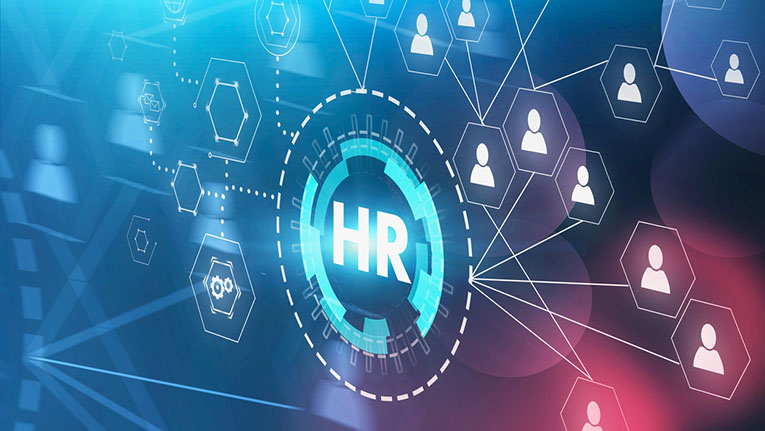
Learn how PossibleWorks can help you
Employee performance management has long been bound by traditional models including the now-infamous annual performance appraisal. While these approaches are still being used in some companies to decide aspects like promotions, compensations, increments etc, their business value has increasingly become redundant. These traditional models are designed more for performance measurement than performance management.
With the rapid advent of HR technology, it’s becoming increasingly clear that the future of performance management lies in tech-enabled continuous evaluation, in tracking rather than measuring, and in lead measures as opposed to just lag measures. A study by Aberdeen showed that companies which have best-in-class talent management programs are actually 26% more likely to be using performance management software.
To understand how HR Tech is transforming performance management, let’s start by taking a look at the origins of performance management. The idea of measuring and managing performance started with the industrial revolution. Each worker’s output (which was easily measurable in a factory) was compared to the expected or standard output. In fact, workers even had cubes of different colors hanging over their workstation — each color represented a different level of performance.
When there was a rise in civil services across the world, soft skills became more important. As a result, employees would get ratings like “excellent employee” and “room for improvement” based completely on the subjective judgement of superiors. Then came the man-to-man ranking system from the US army, which evolved over time to measure traits like cooperation, judgement, initiative, teamwork, and so on.
Today, an increasing number of organizations are preferring OKR (Objectives & Key Results) based performance management. Simply put, in this approach Organizational objectives are transparently reflected across the workforce and every employee goal is tightly aligned to these objectives. Performance in an OKR based approach is measured frequently according to these objectives and the underlying Key Results. In the last 40 years or so, 360-feedback (where feedback comes from peers and subordinates in addition to superiors) has also become popular.

A good performance management system today has to encompass competing objectives as well as the need for being objective, transparent and frequent assessment. From goal-setting to performance planning to feedback, performance management has to perform many functions. At the same time, a good performance management system has to adapt to the shifting needs of businesses. As the workforce is getting dominated by millennials, it’s important to get away from traditional, static techniques that fit into a box to find a more adaptive, dynamic performance management system.
This is precisely where technology plays such a powerful role. A tech-powered performance management system can seamlessly integrate multiple needs and preferences. Goals can be cascaded while being allocated precisely both to individuals as well as to teams. Feedback starts coming in real-time, allowing for goals to be reviewed and monitored on an as-is basis. These features allow teams to start redefining the meaning and scope of performance management. PMS is no longer just a tool to measure performance — it’s now actually fulfilling its potential by tracking and managing performance.

Let’s look at some of the big areas where technology has brought a whole new dimension to employee performance management:
Building quality face-to-face reviews is so important — the nature of feedback, how outcomes are measured, how reviews correlate to performance and compensation, and so on. However, most of the time for HR usually goes into figuring out the logistics, scheduling the reviews, and so on. HR technology keeps track of review cycles and seamlessly gets the process started. When teams no longer have to worry about paperwork, they can immediately focus more on the qualitative and strategic aspect of reviews. In fact, with the right technology you don’t even need to have time-bound reviews — you can look at moving towards a continuous review process. Plus, the right performance management software also allows you to have a bird’s eye view of 360-feedback. This can yield important insights from an employee development point of view.
As millennials and Gen-Z enters the workforce, strong feedback loops and recognition become important. According to Gallup, millennials require more feedback than previous generations. Performance Management Software has provisions for instantaneous feedback loops to get creative. This means employers can now enable continuous performance management by sharing feedback at the right time. Technology also allows for this feedback to be captured in an actionable way, so that it becomes a part of the employee review process.
The quality of hire is an important metric to ensure that the recruitment process is right on track. Good performance management software will link to recruitment software to showcase the performance of different hires. People analytics helps recruiters figure out the common patterns for successful recruits. They can then extend those principles to their current hiring process and continuously improve the quality of hires. This is not only a life-saver for the recruitment teams but also leads to an automatic bump in performance levels.
One of the biggest issues performance management suffers from is the fact that appraisals happen only after a period of time — whether that’s one year or one quarter. Usually, this means that managers have even forgotten the goals they set out at the beginning of the appraisal period. Having the right performance management software allows you to track employee performance against these pre-decided benchmarks on a continuous, everyday basis to avoid performance surprises at the time of review.

The right performance management software goes a long way in supporting an organization’s needs when it comes to crafting a more comprehensive, adaptive, and effective system. Here are the biggest benefits of the right performance management technology:
With the right performance management platform, employees can add their own goals into the software aligned to organizational objectives, based on a discussion with management. Over time, they will be able to track their own progress vis-a-vis these goals through the software. Employees when are able to see the purpose and priorities of the organizations, this creates a feeling of oneness with the larger vision and mission of the company which goes a long way in building both loyalty and productivity.
A continuous feedback mechanism enables employees to know exactly what is expected of them. It also tells them when they’re falling short and what they can do better. This makes performance assessment extremely measured and transparent. A modern PMS enables managers to become coaches rather than micro managing their employees.
Primary reason why Performance Management has a bad reputation is owing to its annual review frequency. Modern tech-based Performance Management systems allows businesses to enables shorter review periods like quarterly/monthly. This enables business to adapt and respond very quickly to dynamic business environment. The current Covid-19 crisis are an apt example to demonstrate the need for organizations to be agile.
People analytics gives C-suite executives an unprecedented insight into employee performance as a whole. It becomes easy to figure out where the gaps are and what steps need to be taken fast. For instance, if a team has a high turnover and low employee evaluation scores, there may be a need to retrain the leadership.
The right performance management technology immediately takes care of all the administrative tasks associated with performance management. From feedback formats to alerts on review times, everything is taken care of by the software. This means that HR teams and senior leadership can focus more on improving the quality of performance management with strategic insights and innovative experiments.

Performance management is far from dead — it is just adapting rapidly to keep pace with the transformational times we live in. The right technology platform can help you build a performance management system that is much more than the sum of its parts. Instead of being a tool for measuring employee outcomes and determining promotions and compensations, a modern, tech-powered PMS can actually help you monitor and improve employee performance in real-time.